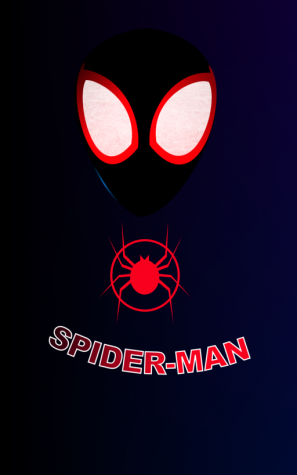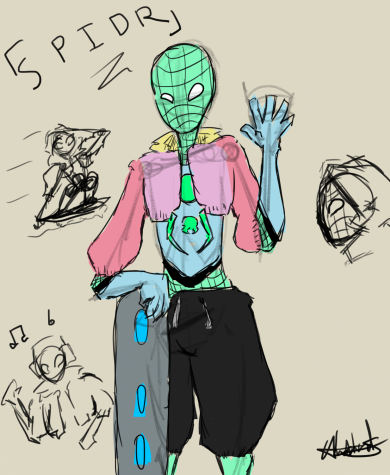“Spider-Man: Into the Spider-Verse” Spins New Web on Same Old Spider Story
January 18, 2019
“Spider-Man: Into the Spider-Verse” swung into theaters, dazzling audiences with its innovative animation and revitalizing the repeatedly told Spidey tale with a fresh face.

When trailers were initially released for the movie, fans were amazed, yet suspicious, of the newer movie, afraid of the same old story being shared.
Their fears were demolished, however, once it finally made its debut with a score of 97 percent on Rotten Tomatoes Dec. 14.
Unlike other comic book inspired movies, the animation of “Into the Spider-Verse” draws right from its source material.
With bright colors, noise bubbles and expressive faces, this movie’s style is like no other.
Despite all the characters being drawn differently like Penni Parker’s Japanese anime style or Spider-Pig’s cartoonish charm, they all interact and move smoothly with each other.
Even if their animation differs in the slightest, all six of the Spider-People seem to be existing on the same plane.
The attractive look of the animation makes the movie much more compelling to watch as the viewer’s eye is drawn to its creativity.

The voices of Miles Morales (Shameik Moore), Peter B. Parker (Jake Johnson) and Spider-Gwen (Hailee Steinfeld) attended San Diego Comic Con to answer fan questions and discuss their roles in the Spider-Verse. [Photo by Gage Skidmore, via Wikimedia Commons]
Though he has been known in the comic book realm for years, Miles Morales debuted as the main character of this film, bringing a fresh, and much needed, face to the franchise.
Watching Miles struggle with high school and his newly found power feels different from all the other Spider-Man movie transformations, but in a way that effectively resonates with audiences.
Instead of deciding to immediately take on the streets and use his great power responsibly, Miles hesitates to come to term with the fact that he has a great power.
His awkward moments in high school and relationships with the adults in his life bring him down to Earth and make him feel like an actual teenager.
Just like the animation, the plot also embraces its comic book origins by introducing each character through their own comic which refreshes audiences but gives depth to each Spider-Person in a time effective manner.
Each character also adds to the plot with their own lessons, perspectives and humor.
But every Spider-Person can all agree on one thing: anyone can be Spider-Man, a lesson that divine creators Stan Lee and Steve Ditko originally intended when creating the friendly-neighborhood hero.
This moral was taken away by many audience members who were inspired to create their own spider-inspired heroes known as spider-sonas.

There were hundreds of spider-sonas created due to the expansion of the universe and the lasting message of the film.
A movement that many hope would make the late Stan Lee proud.
“Spider-Man: Into the Spider-Verse” is still available in theaters for a limited time only.




